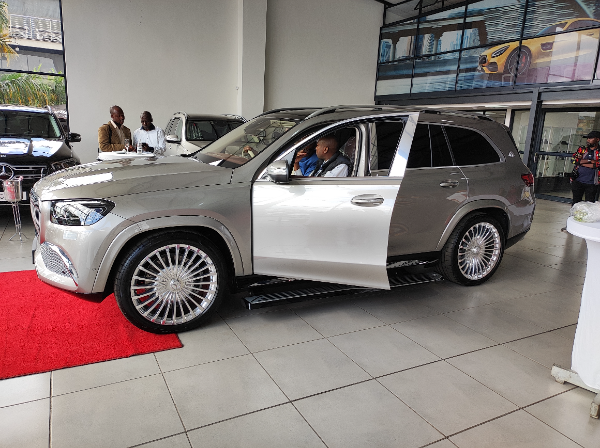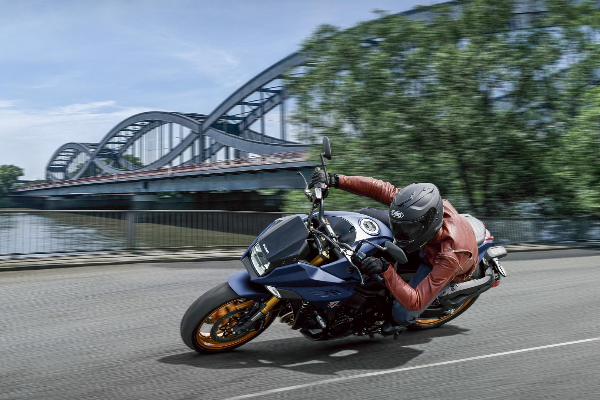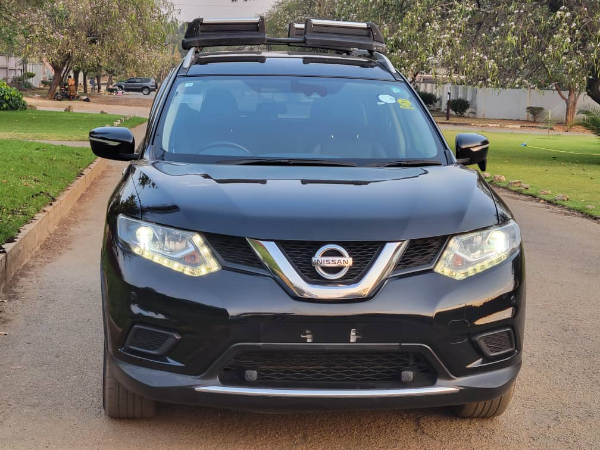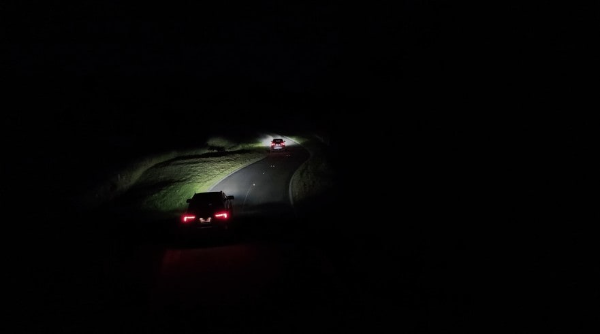Which car offers the best value: Renault Koleos Vs Haval H6 Vs Toyota RAV4?
This is one of the most competitive markets in the automotive industry, but the Renault Koleos provides consumers looking for a well-equipped mid-size SUV a strong French alternative. To decide which product delivers the most value for the money, we compare the Koleos with two competitors.
The second-generation Renault Koleos, which debuted in 2016, is built on the same Renault CMF platform as vehicles like the Nissan X-Trail and the now-defunct Renault Kadjar in its home market. The mid-size crossover SUV market, where the Koleos competes as Renault's local flagship, is a crucial one where a combination of cost, utility, and standard equipment is crucial.
As all three of these vehicles are remarkably comparable in price, we are comparing the entry-level Koleos with the new Haval H6 in Luxury 4WD specification and a mainstay of the market in the form of the Toyota RAV4. Today, we compare these three to see which offers the most value for the money.
The competitors
Renault Koleos 2.5 Expression
Haval H6 2.0T 4WD Luxury
Toyota RAV4 2.0 GX
Engine size
4-cyl, 2.5-litre petrol
4-cyl, 2.0-litre turbo petrol
4-cyl, 2.0-litre petrol
Power/Torque
126 kW/233 Nm
150 kW/320 Nm
127 kW/203 Nm
Boot volume
463-litres
600-litres
580-litres
Gearbox
CVT
7-speed dual-clutch automatic
6-speed manual
Airbag count
6
6
7
Driven wheels
Front
All
Front
Claimed fuel consumption
8.1 L/100km
9.8 L/100km
6.8 L/100km
Braked towing capacity
1 500kg
1 500kg
1 000kg
Fuel capacity
60-litres
Not quoted
55-litres
Comparing the trio
Practicality
The Haval is the largest product in this comparison when comparing the measurements of the rivals because it is the broadest, tallest, and has the longest wheelbase despite being the second-longest after the Koleos. Despite having the lowest overall size of the vehicles in our comparison, the RAV4's ingenious packing gives it a 580-liter boot, which is almost 100 liters more than the Koleos' and only 20 liters smaller than the H6's.
Even if towing might be low on an owner's list of priorities in this segment, it is nevertheless useful to know that the aforementioned car is capable of pulling a respectable quantity. The Toyota has a 1 000kg braked towing capability, while the Haval and Renault each provide a 1 500kg braked towing capacity.
Power and performance
The three products we're looking at all have four-cylinder petrol engines, but that's about it. The Renault is propelled by the tried-and-true 2.5-liter naturally aspirated QR25 engine, which is sourced from Nissan and makes 126kW and 233Nm of torque. The front wheels receive power from the engine through a CVT gearbox. With a claimed fuel consumption of 8.1L/100km, the claimed cruising distance is around 740km.
The sole turbocharged and all-wheel drive product in this group is the Haval, which has a 2.0-liter forced induction engine that produces the maximum power and torque, 150kW and 320Nm.
The RAV4 is the only product in this comparison with a manual transmission, however thanks to its six gears and 2.0-liter naturally aspirated engine's smaller displacement, it has the lowest fuel consumption rate of 6.8L/100km, the second-highest power output of 127kW, and the lowest torque output of 203Nm.
Specification
Customers who purchase in this market want to get the most specification for their hard-earned money. 18-inch alloy wheels, climate control, a multifunction steering wheel, a color touchscreen infotainment system with Apple CarPlay and Android Auto capabilities, cruise control, cloth-covered seats, a rear PDC, and roof rails are all included as standard equipment with the Koleos Expression. With 17-inch alloy wheels and air conditioning, the Toyota is relatively underspecified compared to its competitors in this area; however, it does have LED headlights, which the Koleos does not; otherwise, the RAV4's specification is very similar to that of the Renault.
When we compare the specifications of the Koleos and the Haval in Luxury trim, we see that the Haval adds features like a surround-view camera with front and rear PDC, front and rear USB ports, LED headlights and fog lamps, faux leather seats, a panoramic sunroof, electrically adjustable/folding side mirrors, keyless entry/start, adaptive cruise control, lane departure warning, lane keep assist, and a tyre pressure monitoring system.
Safety
When the Renault was put through its paces by Euro NCAP in 2017, it received a 5-Star safety certification, scoring 90% for the safety of adult occupants, 79% for the safety of children, 62% for the safety of pedestrians, and 75% for its safety assistance systems.
Although the Haval has not yet undergone a crash test, we have been informed that it will soon. There are several electronic tools and partially automated driving features included with the product. Additionally, it has ISOFIX child seat anchor points and six airbags, so we may assume that it will be a safe vehicle.
The Toyota was also put through a safety evaluation by Euro NCAP in 2019 and received a 5-Star rating, scoring 93% for adult occupant safety, 87% for child safety, 85% for pedestrian safety, and 77% for its safety assistance systems.
Verdict
After examining the numbers and details, it appears that the Toyota RAV4, despite being the most efficient, comes in third place in our comparison because it has the least amount of equipment, costs the most, and has a manual gearbox in a market where automatics rule supreme.
Despite having the lowest list price and the greatest warranty and service package combo, the Renault Koleos came in second. The Haval H6, which provides all-wheel drive, a great amount of equipment, spaciousness, and power for the money, is the only remaining vehicle and is therefore our winner.
The second-generation Renault Koleos, which debuted in 2016, is built on the same Renault CMF platform as vehicles like the Nissan X-Trail and the now-defunct Renault Kadjar in its home market. The mid-size crossover SUV market, where the Koleos competes as Renault's local flagship, is a crucial one where a combination of cost, utility, and standard equipment is crucial.
As all three of these vehicles are remarkably comparable in price, we are comparing the entry-level Koleos with the new Haval H6 in Luxury 4WD specification and a mainstay of the market in the form of the Toyota RAV4. Today, we compare these three to see which offers the most value for the money.
The competitors
Renault Koleos 2.5 Expression
Haval H6 2.0T 4WD Luxury
Toyota RAV4 2.0 GX
Engine size
4-cyl, 2.5-litre petrol
4-cyl, 2.0-litre turbo petrol
4-cyl, 2.0-litre petrol
Power/Torque
126 kW/233 Nm
150 kW/320 Nm
127 kW/203 Nm
Boot volume
463-litres
600-litres
580-litres
Gearbox
CVT
7-speed dual-clutch automatic
6-speed manual
Airbag count
6
6
7
Driven wheels
Front
All
Front
Claimed fuel consumption
8.1 L/100km
9.8 L/100km
6.8 L/100km
Braked towing capacity
1 500kg
1 500kg
1 000kg
Fuel capacity
60-litres
Not quoted
55-litres
Comparing the trio
Practicality
The Haval is the largest product in this comparison when comparing the measurements of the rivals because it is the broadest, tallest, and has the longest wheelbase despite being the second-longest after the Koleos. Despite having the lowest overall size of the vehicles in our comparison, the RAV4's ingenious packing gives it a 580-liter boot, which is almost 100 liters more than the Koleos' and only 20 liters smaller than the H6's.
Even if towing might be low on an owner's list of priorities in this segment, it is nevertheless useful to know that the aforementioned car is capable of pulling a respectable quantity. The Toyota has a 1 000kg braked towing capability, while the Haval and Renault each provide a 1 500kg braked towing capacity.
Power and performance
The three products we're looking at all have four-cylinder petrol engines, but that's about it. The Renault is propelled by the tried-and-true 2.5-liter naturally aspirated QR25 engine, which is sourced from Nissan and makes 126kW and 233Nm of torque. The front wheels receive power from the engine through a CVT gearbox. With a claimed fuel consumption of 8.1L/100km, the claimed cruising distance is around 740km.
The sole turbocharged and all-wheel drive product in this group is the Haval, which has a 2.0-liter forced induction engine that produces the maximum power and torque, 150kW and 320Nm.
The RAV4 is the only product in this comparison with a manual transmission, however thanks to its six gears and 2.0-liter naturally aspirated engine's smaller displacement, it has the lowest fuel consumption rate of 6.8L/100km, the second-highest power output of 127kW, and the lowest torque output of 203Nm.
Specification
Customers who purchase in this market want to get the most specification for their hard-earned money. 18-inch alloy wheels, climate control, a multifunction steering wheel, a color touchscreen infotainment system with Apple CarPlay and Android Auto capabilities, cruise control, cloth-covered seats, a rear PDC, and roof rails are all included as standard equipment with the Koleos Expression. With 17-inch alloy wheels and air conditioning, the Toyota is relatively underspecified compared to its competitors in this area; however, it does have LED headlights, which the Koleos does not; otherwise, the RAV4's specification is very similar to that of the Renault.
When we compare the specifications of the Koleos and the Haval in Luxury trim, we see that the Haval adds features like a surround-view camera with front and rear PDC, front and rear USB ports, LED headlights and fog lamps, faux leather seats, a panoramic sunroof, electrically adjustable/folding side mirrors, keyless entry/start, adaptive cruise control, lane departure warning, lane keep assist, and a tyre pressure monitoring system.
Safety
When the Renault was put through its paces by Euro NCAP in 2017, it received a 5-Star safety certification, scoring 90% for the safety of adult occupants, 79% for the safety of children, 62% for the safety of pedestrians, and 75% for its safety assistance systems.
Although the Haval has not yet undergone a crash test, we have been informed that it will soon. There are several electronic tools and partially automated driving features included with the product. Additionally, it has ISOFIX child seat anchor points and six airbags, so we may assume that it will be a safe vehicle.
The Toyota was also put through a safety evaluation by Euro NCAP in 2019 and received a 5-Star rating, scoring 93% for adult occupant safety, 87% for child safety, 85% for pedestrian safety, and 77% for its safety assistance systems.
Verdict
After examining the numbers and details, it appears that the Toyota RAV4, despite being the most efficient, comes in third place in our comparison because it has the least amount of equipment, costs the most, and has a manual gearbox in a market where automatics rule supreme.
Despite having the lowest list price and the greatest warranty and service package combo, the Renault Koleos came in second. The Haval H6, which provides all-wheel drive, a great amount of equipment, spaciousness, and power for the money, is the only remaining vehicle and is therefore our winner.









